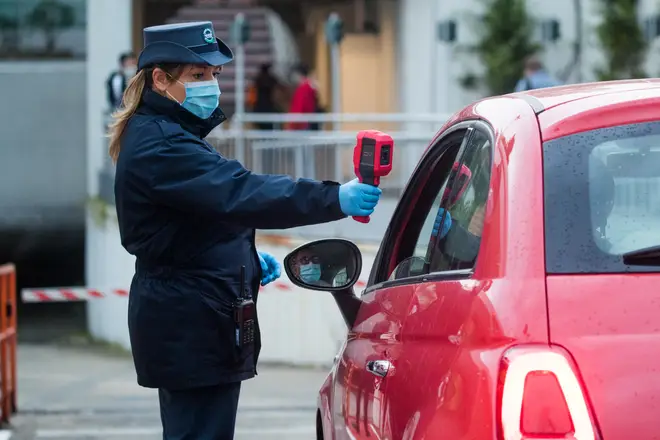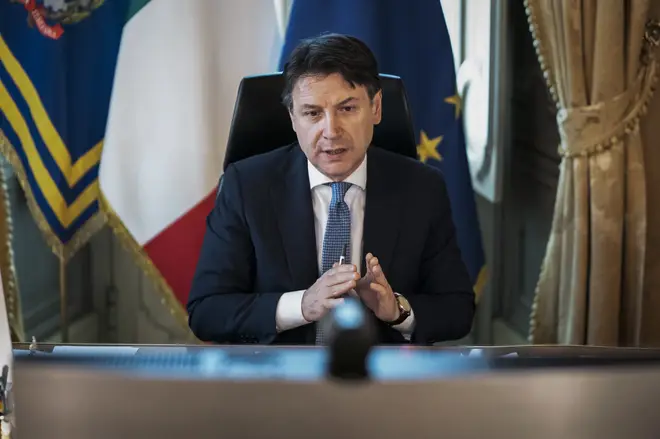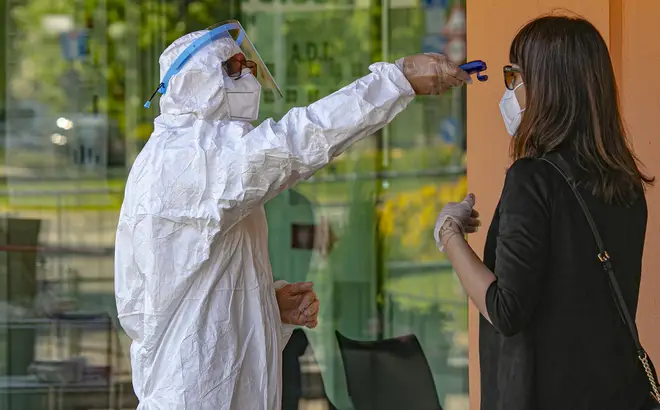
Daniel Barnett 9pm - 10pm
27 April 2020, 11:26

Italy's prime minister has outlined plans to ease the country's coronavirus lockdown restrictions seven weeks after they were first imposed.
Giuseppe Conte said in a televised address to the nation that coronavirus measures would be relaxed from 4 May.
He explained that people will be able to visit relatives in small numbers, having previously being banned from doing so.
Parks, building sites and factories will also be opened.
However, schools will remain closed until September.
Follow our coronavirus liveblog
Italy still has Europe's highest total death toll, at 26,644, however on Sunday the country recorded its lowest number of daily deaths since March, just 260.
Other European countries, including Switzerland and Spain, have also announced they are relaxing their measures.

Mr Conte told the country that it would begin "Phase Two" of lifting its coronavirus lockdown from next month.
The full list of measures measures include:
- People can move around their own regions, but cannot move between different regions
- Bars and restaurants will reopen for takeaway service from 4 May
- Dine-in service will resume from 1 June, and hairdressers, beauty salons and bars will also open
- Retail shops will reopen on 18 May along with museums and libraries
- People can do sports not only in the vicinity of their homes but in wider areas
- Sports teams will also be able to hold group training from 18 May
- Funerals can resume with a maximum of 15 people attending

Listen & subscribe: Global Player | Apple Podcasts | Google Podcasts | Spotify
Italy had the bad luck of being the first Western country to be slammed by the outbreak, and its total of 26,000 fatalities lags behind only the US in the global death toll.
Italy's first homegrown case was recorded on February 21, at a time when the World Health Organisation was still insisting the virus was "containable" and not nearly as infectious as the flu.
But there is also evidence that demographics and health care deficiencies combined with political and business interests to expose Lombardy's 10 million people in ways unseen anywhere else, particularly the most vulnerable in nursing homes.
Virologists and epidemiologists say what went wrong there will be studied for years, given how the outbreak overwhelmed a medical system considered one of Europe's best.
In neighbouring Veneto, the impact was significantly more controlled.
Prosecutors are deciding whether to lay any criminal blame for the hundreds of dead in nursing homes, many of whom are not even counted in Lombardy's official death toll of 13,269.
By contrast, Lombardy's frontline doctors and nurses are being hailed as heroes for risking their lives to treat the sick under extraordinary levels of stress, exhaustion, isolation and fear.
Even after Italy registered its first homegrown case, doctors did not understand the unusual way Covid-19 could present itself, with some patients experiencing a rapid decline in their ability to breathe.